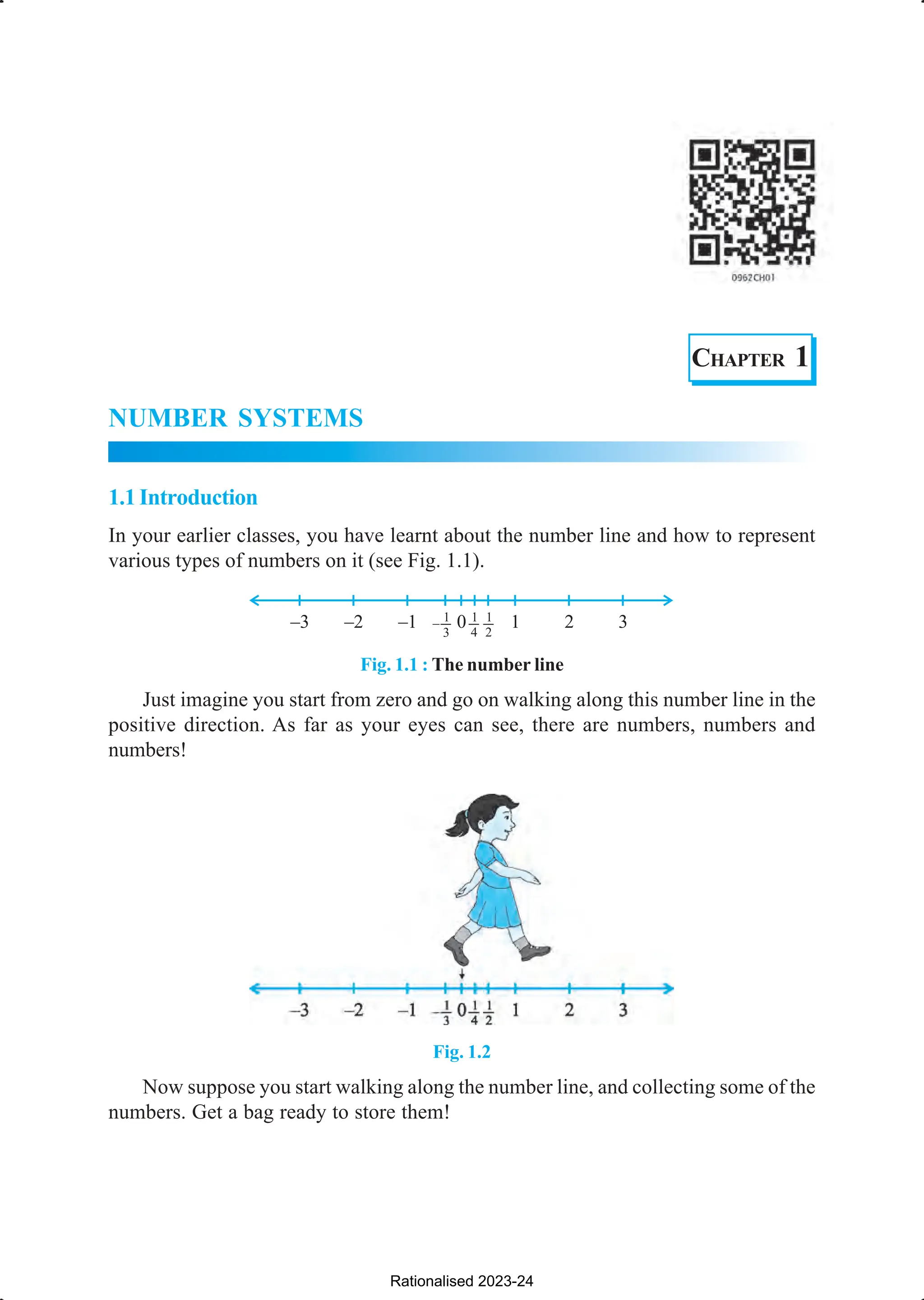This document discusses number systems and different types of numbers. It begins by introducing rational numbers as numbers that can be written as fractions with integer numerators and denominators. Irrational numbers are then defined as numbers that cannot be expressed as rational numbers. Some examples of irrational numbers like square roots and pi are provided. Finally, it is explained that the set of all rational and irrational numbers together make up the real numbers, and every real number can be represented by a unique point on the number line.













![14 MATHEMATICS
non-terminating non-recurring lying between them. Of course, you can find infinitely
many such numbers.
An example of such a number is 0.150150015000150000...
EXERCISE 1.3
1. Write the following in decimal form and say what kind of decimal expansion each
has :
(i)
36
100
(ii)
1
11
(iii)
1
4
8
(iv)
3
13
(v)
2
11
(vi)
329
400
2. You know that
1
7
= 0142857
. . Can you predict what the decimal expansions of
2
7
,
3
7
,
4
7
,
5
7
,
6
7
are, without actually doing the long division? If so, how?
[Hint : Study the remainders while finding the value of
1
7
carefully.]
3. Express the following in the form
p
q
, where p and q are integers and q ≠ 0.
(i) 0 6
. (ii) 0 47
. (iii) 0 001
.
4. Express 0.99999 .... in the form
p
q
. Are you surprised by your answer? With your
teacher and classmates discuss why the answer makes sense.
5. What can the maximum number of digits be in the repeating block of digits in the
decimal expansion of
1
17
? Perform the division to check your answer.
6. Look at several examples of rational numbers in the form
p
q
(q ≠ 0), where p and q are
integers with no common factors other than 1 and having terminating decimal
representations (expansions). Can you guess what property q must satisfy?
7. Write three numbers whose decimal expansions are non-terminating non-recurring.
8. Find three different irrational numbers between the rational numbers
5
7
and
9
11
.
9. Classify the following numbers as rational or irrational :
(i) 23 (ii) 225 (iii) 0.3796
(iv) 7.478478... (v) 1.101001000100001...
Rationalised 2023-24](https://image.slidesharecdn.com/9-maths-ncert-chapter-1-231121105606-50144ce1/75/9-Maths-NCERT-Chapter-1-pdf-14-2048.jpg)









